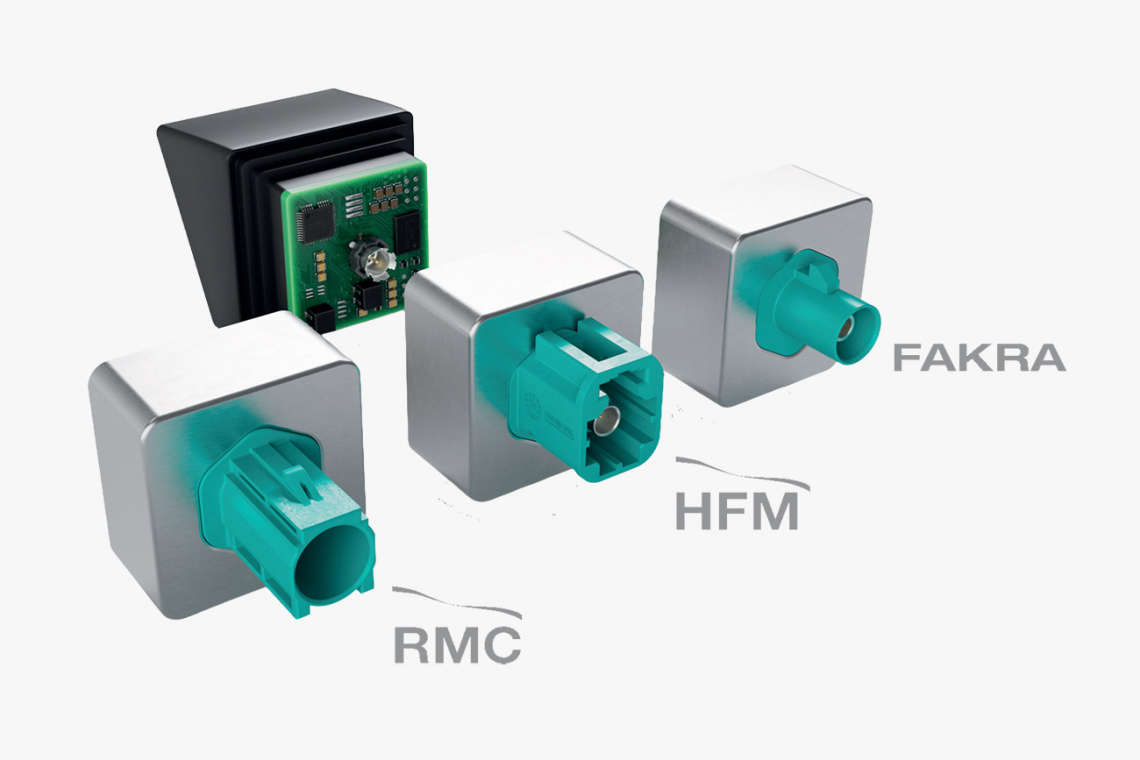New camera connection concepts for automotive applications such as advanced driver assistance systems (ADAS), driver monitoring and autonomous driving are generating interest.
The compact connector systems from Rosenberger Hochfrequenztechnik, a manufacturer of connectivity solutions headquartered in Fridolfing, were presented. According to the manufacturer, the market innovations are characterized by high data transmission rates, flexible integration options and reliable EMC shielding. The connection solutions are based on the coaxial interfaces FAKRA (Fachkreis Automobil), HFM (High-Speed FAKRA-Mini) and RMC (Rosenberger Mini-Coax) and cover frequency ranges from DC up to 12 GHz. The characteristic impedance is 50 Ω. Variants with or without tolerance compensation are available for different technical requirements. The tolerance compensation is up to 0.5 mm in the X, Y and Z directions with a maximum tilt angle of 1.5°.
Space-optimized for indoor applications
The modular connector system allows easy integration into electronic environments with high packing density. Customized housing variants made of metal or plastic as well as pigtail versions allow the components to be adapted to individual requirements.
The high-frequency performance and connection quality of surface-mounted components (SMDs) depends, among other things, on the substrate thickness and the PCB design. Rosenberger offers layout recommendations and optimized footprints to ensure reliable performance and manufacturability. In driver monitoring systems, which are often housed in tight spaces such as behind rear-view mirrors or in the headliner, customer-specific wire-to-board solutions or 'DirectLink' pigtails (i.e. cables that are assembled with a connector on one side and unassembled on the other) are particularly suitable. According to the manufacturer, compact designs enable space-saving integration without having to compromise on signal quality or electromagnetic compatibility.


